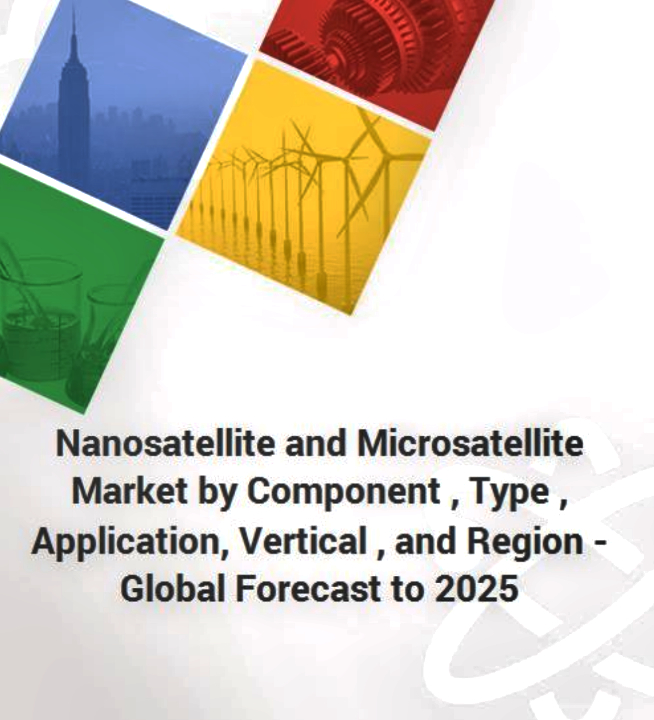
The “Nanosatellite and Microsatellite Market by Component (Hardware, Software & Data Processing, Launch Services), Type (Nanosatellite and Microsatellite), Application, Vertical (Government, Defense, Civil), and Region – Global Forecast to 2025” report has been added to ResearchAndMarkets.com‘s offering.
The global nanosatellite and microsatellite market is expected to grow from $1.8 billion in 2020 to $4.8 billion by 2025, at a Compound Annual Growth Rate (CAGR) of 21.3% during the forecast period.
This report includes an in-depth competitive analysis of key players in the smallsat market, along with their company profiles, recent developments, and key market strategies. The report segments the global nanosatellite and microsatellite market by component, type, application, vertical, and region.
The satellites are used for several applications, such as communication, Earth Observation (EO) and remote sensing, scientific research, biological experiments, academic training, reconnaissance, and various other applications by the defense, intelligence, civil, commercial, and/or government users. Continuous advancements in the miniaturization of technologies, such as electronics, low-mission costs, and the increasing use of satellite constellations, are major drivers of the market.
Hardware is the core of smallsats, which are readily available with vendors for easy integration and plug-and-play processes. Hardware contributes to the complete mass of the satellites, and based on the weight of hardware, small satellites are categorized as nanosatellites or microsatellites. The hardware segment includes subsystems, such as payloads, structures, telecommunications, on-board computers, power systems, attitude control systems, and propulsion systems. The growth in this segment is significant, with a number of players offering low-cost hardware and manufacturing services.
Smallsats have brought novel opportunities for EO and remote sensing using inexpensive spacecraft to capture images of the Earth and gather specific data and are expected to play a major role in remote sensing missions due to their enhanced computational and communication capabilities, along with competencies in making decisions about the time and data to be shared. Successful programs to develop and examine advanced hyperspectral imaging systems compatible with nanosatellite and microsatellite missions enable small satellites to generate high-quality complex images.
North America leads in the adoption of smallsats and provides great opportunities for the growth of the overall market. The region has always been an early adopter of new technology or software, and the North American market grows at a faster rate initially as compared to any other region.
The demand for nanosatellites and microsatellites in North America is being driven by the booming digitalization across industries along with surging demand for earth observation satellites, which offer extremely high-resolution earth images and videos, as close as 1 meter or less, of the Earth’s surface.
